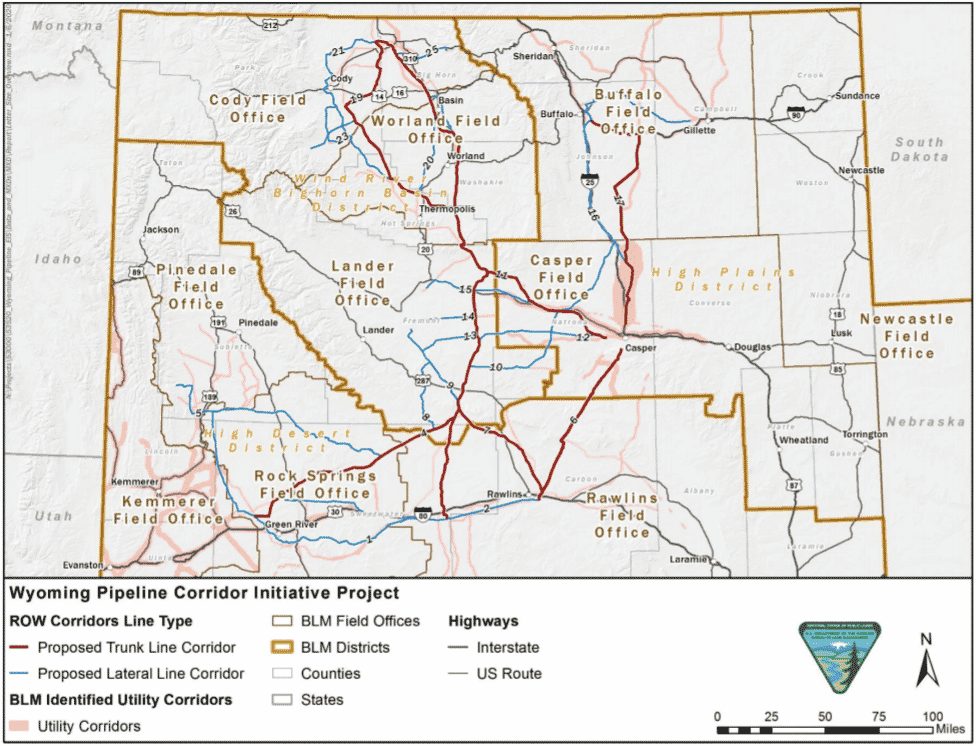U.S. Interior Department Issues Draft Review for Wyoming’s Carbon Dioxide Pipeline Initiative

The Bureau of Land Management on April 17 released a draft environmental assessment of the Wyoming Pipeline Corridor Initiative, which seeks to designate nearly 2,000 miles of pipeline corridor network for projects associated with carbon capture, utilization and storage, as well enhanced oil recovery.
The initiative, proposed by the State of Wyoming, encompasses pipeline corridors across private, state, and BLM-managed lands within the state. The project will not authorize new pipelines or construction but may amend some of the agency’s resource management plans covering 1,105 miles of energy corridors located on public lands.
The initiative would reverse the downward trend of declining oil production by stimulating economic development through enhanced oil recovery, or EOR, according to BLM. The project would connect oil fields that are good candidates for EOR with sources of carbon dioxide. EOR projects can store large quantities of carbon dioxide, which is a purchased commodity and is recycled continuously in the reservoir rather than vented to the atmosphere. BLM expects these projects to add value by maximizing oil recovery from existing, previously disturbed fields, while also “offering a bridge to a reduced carbon emissions future.” Currently, there are more than 90 potential fields suitable for “CO2 flooding with recoverable reserves” in excess of 1.5 billion barrels, according to the agency.
BLM notes that the designation of corridors would streamline environmental reviews of potential projects proposed within the corridors as the National Environmental Protection Act documents could tier to this analysis. Although carbon dioxide sources within Wyoming are abundant, the agency said that the limited network and capacity of pipelines pose constraints. The BLM action aims to designate corridors for the preferred location of future pipelines associated with the transport of carbon dioxide, EOR products, and other compatible uses, and to incorporate the designated corridors into the agency’s resource management plans within Wyoming.
Comments on the draft assessment are due by July 16.
EnerKnol Pulses like this one are powered by the EnerKnol Platform—the first comprehensive database for real-time energy policy tracking. Sign up for a free trial below for access to key regulatory data and deep industry insights across the energy spectrum.
ACCESS FREE TRIAL


